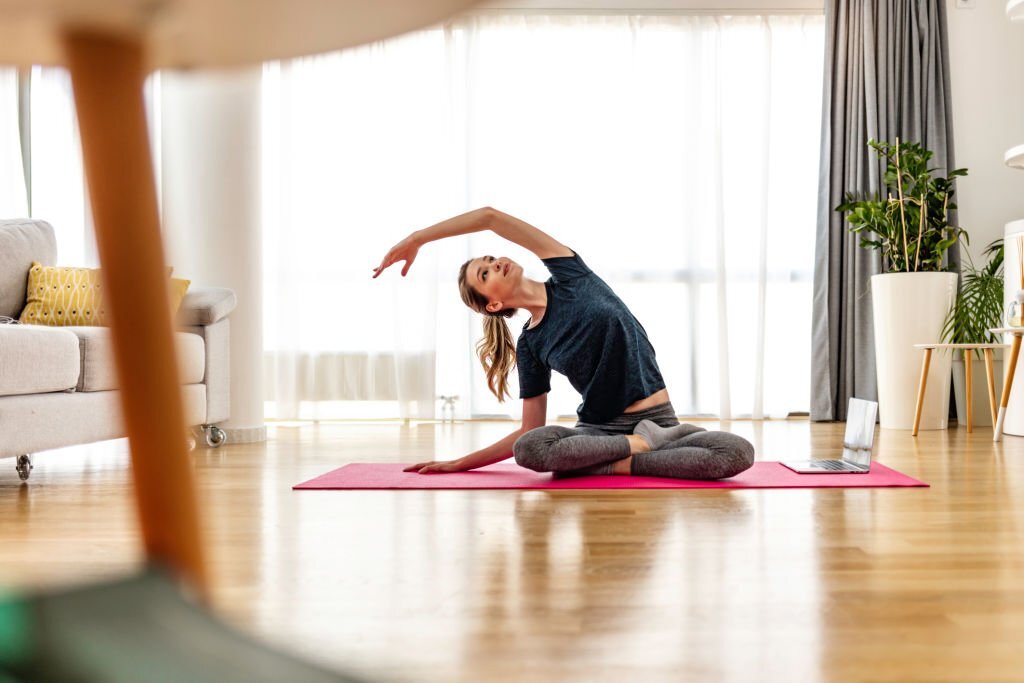Looking to start your yoga journey but don’t know where to begin? This guide is perfect for you! Yoga is a 5000-year-old physical, mental and spiritual discipline that offers numerous benefits to your overall health and wellness. From improving posture and flexibility to reducing stress and anxiety, yoga has something to offer everyone.
This article will provide a step-by-step guide to basic yoga poses and practices, making it easy for beginners. Whether you’re looking to improve your physical fitness or simply seeking inner peace, yoga has something to offer. So why wait? Let’s get started!
Benefits Of Yoga
The Advantages of “Yoga for Beginners: A Step-by-Step Guide to Basic Yoga Poses and Practices”.
- Improves Physical Fitness: Yoga can help improve flexibility, strength, and balance, making it an excellent addition to any fitness routine.
- Reduces Stress and Anxiety: Yoga’s deep breathing and meditation practices can help calm the mind and reduce stress and anxiety levels.
- Increases Inner Peace: The combination of physical postures and mindfulness practices can lead to a greater sense of inner peace and well-being.
- Improves Sleep Quality: Regular yoga practice has been shown to improve sleep quality and reduce symptoms of insomnia.
- Accessible for Everyone: This guide is designed for beginners, making yoga accessible to everyone, regardless of their level of fitness or prior experience.
- Provides a Full-Body Workout: Yoga poses and practices work the entire body, from the muscles to the joints, providing a full-body workout.
- Promotes Overall Health and Wellness: By improving physical and mental health, yoga can promote overall health and wellness and lead to a more fulfilling life.
So why wait? Start your yoga journey today with this step-by-step guide and experience the many benefits it has to offer! To know more about the benefits of yoga have a look at this article Benefits of Yoga.
Best Time to Practise Yoga
The best time to practice yoga varies from person to person and depends on your schedule and lifestyle. Some people prefer to practice in the morning as it helps set the tone for a productive day, while others prefer evening practice as a way to unwind and de-stress after a long day.
However, the most important thing is to find a time that works for you and stick to a regular schedule. Whether you practice in the morning, afternoon, or evening, the key is to make it a consistent part of your routine.
By doing so, you’ll be able to experience the many physical and mental benefits that yoga has to offer. So choose a time that works best for you and start your yoga journey today!
How to Incorporate Yoga into Your Daily Routine
Here’s how you can incorporate yoga into your daily routine and start reaping its benefits:
- Make a Schedule: The key to making yoga a regular part of your routine is to schedule it into your day. Choose a time that works best for you, whether it’s first thing in the morning, during your lunch break, or in the evening before bed.
- Start Small: If you’re new to yoga, it’s important to start small and gradually build up your practice. Try to start with 10-15 minutes a day and gradually increase the length of your practice as you get more comfortable.
- Find a Comfortable Space: Find a quiet and comfortable space where you can practice yoga without any distractions. A mat or towel on a flat surface is all you need to get started.
- Use a Guide: If you’re new to yoga, it can be helpful to use a guide or follow along with an online video. This will help you get the most out of your practice and ensure that you’re doing the poses correctly.
- Make it a Mindful Practice: Yoga is not just about the physical poses, but also about the mental and spiritual aspects. Try to make your yoga practice a mindful one by focusing on your breathing and being present at the moment.
- Be Consistent: To get the most out of your yoga practice, it’s important to be consistent and make it a regular part of your routine. Even just 10 minutes a day can make a big difference in your physical and mental well-being.
Numerous advantages to your health and well-being might result from including yoga in your regular activity. Yoga provides benefits for everyone, whether you want to increase your physical fitness, lessen your tension and anxiety, or just find inner peace. Why then wait? Start adding yoga to your daily schedule right away to start enjoying all of its advantages! Now let’s have a look at the best yoga poses and postures.
If you are a diabetic patient, Transform Your Health with the Top 10 Yoga Poses to Beat Diabetes
Yoga for beginners: A Step-By-Step Guide To Yoga Poses & Practices
1. Mountain Pose (Tadasana)
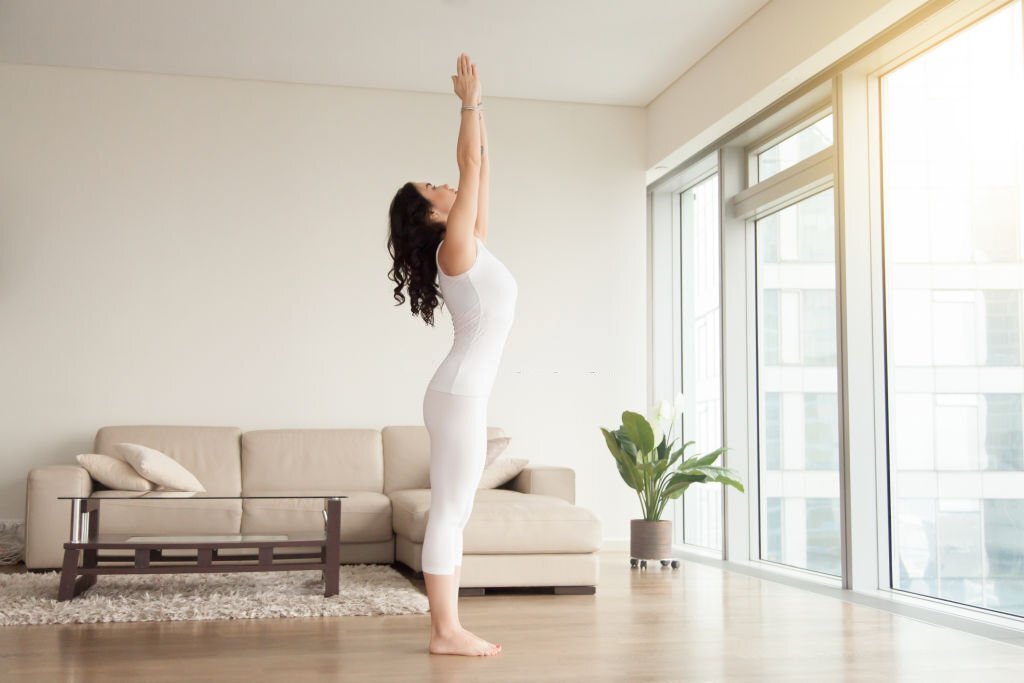
Mountain pose, also known as Tadasana, is a foundational yoga pose that is great for beginners. This simple yet powerful pose has many benefits, including improving posture, strengthening the legs and core, and reducing stress and anxiety. In this article, we’ll break down the steps to help you master the mountain pose. For a complete tutorial Click Here.
The mountain pose is a great starting point for any yoga practice, as it helps improve posture, balance, and overall stability. This pose can also be incorporated into more advanced practice, serving as a foundation for other standing poses. So give it a try, and see how the mountain pose can improve your yoga practice and overall well-being.
How to do-
- Stand Tall: To get into mountain pose, start by standing tall with your feet hip-width apart and your arms by your sides. Make sure to distribute your weight evenly between both feet.
- Align Your Spine: Next, engage your core and lengthen your spine. Tilt your tailbone down and lift your chest up towards the ceiling.
- Lift Your Arches: Gently press down into your feet, lifting the arches and rooting into the ground. This will help engage your legs and improve your balance.
- Open Your Shoulders: Keep your shoulders relaxed and away from your ears. Reach your arms up towards the sky, keeping your elbows straight.
- Breath Deeply: Take deep breaths and hold the pose for several breaths. As you exhale, imagine your spine growing taller and your feet rooted into the ground.
- Modify As Needed: If you have difficulty balancing, try standing with your feet slightly apart or with your back against a wall for support. You can also try using props such as blocks or a chair for added support.
2. Downward Dog (Adho Mukha Svanasana)

Downward dog pose, also known as Adho Mukha Svanasana, is a popular yoga pose that provides numerous benefits to your body and mind. This pose stretches and strengthens the hamstrings, calves, and spine, while also helping to reduce stress and improve circulation.
The downward dog is a fantastic position for boosting flexibility, circulation, and stress reduction. It’s also a common posture in many yoga styles, making it a fantastic pose for both newcomers and more experienced practitioners to learn. Why then wait? Try out the downward dog stance to learn how it might benefit your general health and yoga practice. Here’s how to get into the downward dog pose:
How to do-
Start on All Fours: Begin on all fours, with your hands shoulder-width apart and your knees hip-width apart. Keep your wrists under your shoulders and your knees under your hips.
Lift Your Hips: As you inhale, lift your hips up towards the ceiling, coming into an inverted V-shape. Keep your hands and feet rooted into the ground.
Straighten Your Arms and Legs: Straighten your arms and legs, making sure your body forms a triangle shape. Keep your hands and feet hip-width apart and make sure your shoulders are away from your ears.
Engage Your Core: Engage your core and keep your gaze between your legs or towards your knees. Keep your neck relaxed and avoid straining your neck.
Breathe Deeply: Take deep breaths and hold the pose for several breaths. As you exhale, imagine your body stretching and lengthening.
Modify As Needed: If you have difficulty balancing, try bending your knees slightly or using props such as blocks for added support. You can also come onto your forearms for a more restorative variation.
3. Warrior 2 (Virabhadrasana 2)
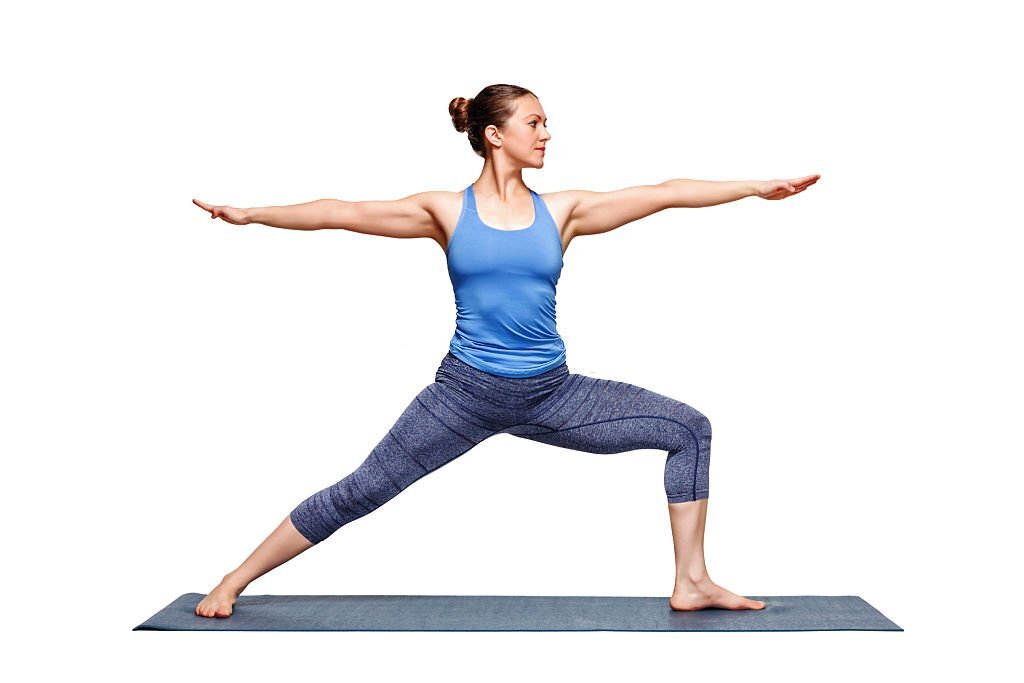
Virabhadrasana 2, commonly known as the warrior 2 positions, is a challenging and grounded yoga asana that stretches and develops the hips, groins, and legs while also strengthening the core.
The Warrior 2 yoga pose is excellent for enhancing strength, balance, and concentration. It’s also a common posture in many yoga styles, making it a fantastic pose for both newcomers and more experienced practitioners to learn. Why then wait? Try the Warrior II position out to discover how it might benefit your overall health and yoga practice. How to perform the Warrior 2 position is as follows:
How to do-
Start in Mountain Pose: Begin in mountain pose, with your feet hip-width apart and your arms by your sides.
Step Your Right Foot Forward: Step your right foot forward, about 3-4 feet in front of your left foot. Turn your right foot to the right so that your toes are pointing to the right.
Bend Your Right Knee: Bend your right knee and make sure your knee is directly above your ankle.
Reach Your Arms Out: Reach your arms out to the side, keeping them parallel to the ground. Your right arm should be in front of you and your left arm should be behind you.
Gaze Over Your Right Hand: Gaze over your right hand, keeping your neck relaxed.
Hold and Breathe: Take deep breaths and hold the pose for several breaths. As you exhale, imagine your body strengthening and grounding.
Release and Repeat: Release the pose and repeat on the other side.
4. Child’s Pose
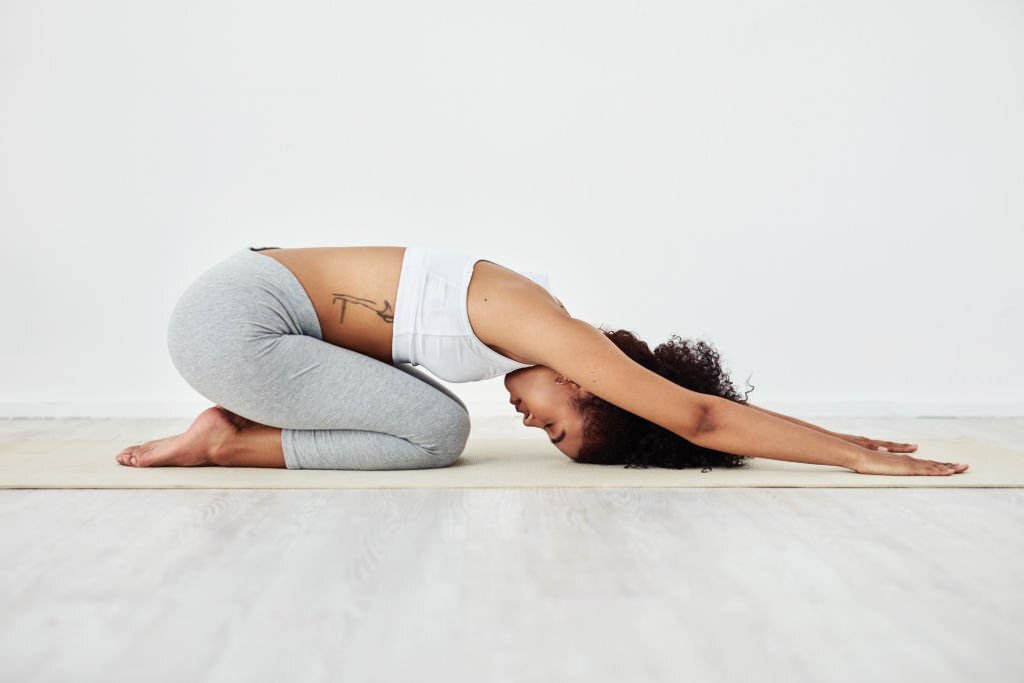
Child’s Pose, also known as Balasana, is a restorative and calming yoga pose that can help reduce stress and tension in the back, neck, and hips. It’s a great pose to do after a workout or when you need to take a break from more challenging yoga poses.
The Child’s Pose is a great yoga pose for reducing stress, and tension, and improving your flexibility. It’s also a beginner-friendly pose, making it a great pose for those new to yoga. So why wait? Add the Child’s Pose to your routine and see how it can improve your yoga practice and overall well-being. Here’s how to get into Child’s Pose:
How to do-
- Start on All Fours: Begin on all fours, with your hands shoulder-width apart and your knees hip-width apart.
- Lower Your Hips Back: As you exhale, lower your hips back towards your heels and stretch your arms out in front of you. Keep your forehead touching the ground and your arms parallel to each other.
- Relax Your Body: Relax your entire body, making sure to release any tension in your neck, back, and hips.
- Breathe Deeply: Take deep breaths and hold the pose for several breaths. As you inhale, imagine your body relaxing and as you exhale, imagine your body letting go of stress and tension.
- Modify As Needed: If you have difficulty reaching your heels, try placing a pillow or blanket under your hips for added comfort. You can also place your arms by your sides or reach them out to the side for a variation.
5. Triangle Pose (Trikonasana)

Triangle Pose, also known as Trikonasana, is a standing yoga pose that improves balance, strengthens the legs, and stretches the hips, hamstrings, and spine. This pose improves balance and stretches the legs, hips, and spine. Stand in Warrior I, then bring one hand down to the ground while reaching the other hand up towards the ceiling.
The Triangle Pose is a great yoga pose for improving balance, strengthening the legs, and stretching the hips, hamstrings, and spine. It’s also a beginner-friendly pose, making it a great pose for beginner yoga poses. Give Triangle Pose a try and see how it can improve your yoga practice and overall well-being. Here’s how to get into Triangle Pose:
How to do-
- Stand with Your Feet Apart: Stand with your feet about 3-4 feet apart, with your right foot turned out 90 degrees and your left foot turned slightly inwards.
- Reach Down to Your Right Foot: As you exhale, reach down to your right foot with your right hand, keeping your left arm extended up towards the ceiling. Your body should form a triangle shape.
- Look Up: Look up at your left hand or towards the ceiling.
- Breathe Deeply: Take deep breaths and hold the pose for several breaths. As you inhale, imagine your body lengthening and as you exhale, imagine your body relaxing.
- Repeat on the Other Side: Repeat the pose on the other side, reaching down to your left foot with your left hand.
Tips for a Successful Yoga Practice as a Beginner
Starting a yoga practice can be intimidating, especially if you’re new to the world of yoga. But with a little guidance and patience, you can develop a successful yoga practice that brings peace, strength, and flexibility to your life. Here are some tips to help you get started:
- Find the Right Class: Look for a beginner-friendly class at a local yoga studio or gym, or try an online yoga class to get a feel for the practice. Make sure the instructor is qualified and that the class is appropriate for your skill level.
- Set Realistic Goals: Starting small and setting achievable goals is key to a successful yoga practice. Focus on learning the basics, such as breathing and proper alignment, before trying more advanced poses.
- Invest in Good Equipment: Invest in a comfortable yoga mat, props (such as blocks or straps), and comfortable clothing that allows you to move freely.
- Be Patient: Remember that it takes time to see progress in your practice. Don’t be discouraged if you can’t do a certain pose, and don’t compare yourself to others in the class. Focus on your own progress, and trust that it will come with time and practice.
- Practice Regularly: Try to practice yoga at least three times a week, and don’t be afraid to take breaks when you need to. Consistency is key to a successful practice.
- Listen to Your Body: Yoga should never be painful. If you feel any discomfort or pain, stop the pose and ask for modifications from your instructor.
By following these tips, you can develop a successful yoga practice as a beginner. So why wait? Start your yoga journey today and experience the many benefits that come with this ancient practice.
Common Mistakes to Avoid When Practicing Yoga
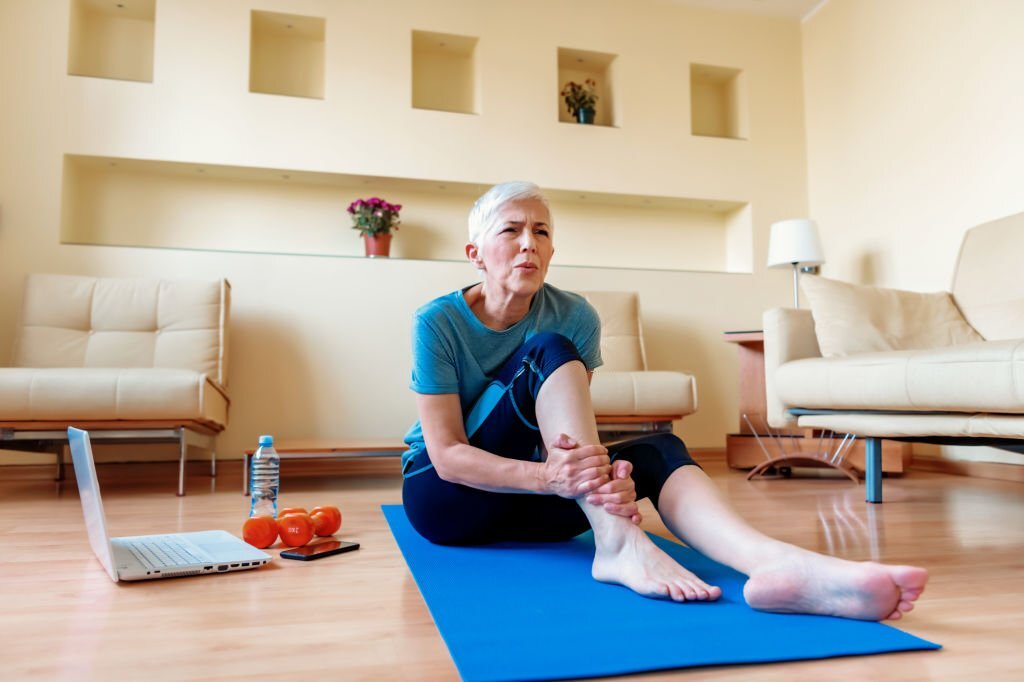
Yoga is an effective exercise for improving physical and mental well-being, but it can also be dangerous if not practiced correctly. To avoid injury and get the most out of your yoga practice, here are some common mistakes to avoid:
- Not Warming Up: Warming up before practice is essential to prevent injury and prepare your body for movement. Try a few minutes of light cardio or gentle stretching before starting your yoga practice.
- Improper Alignment: Poor alignment can lead to injury and make poses less effective. Make sure to listen to your instructor and focus on proper alignment in each pose.
- Comparing Yourself to Others: Yoga is not a competition. Focus on your own practice and progress, and don’t compare yourself to others in the class.
- Pushing Yourself Too Hard: Yoga should be challenging, but it should never be painful. If you feel any discomfort or pain, stop the pose and ask for modifications.
- Skipping the Cool-Down: The cool-down is just as important as the warm-up. Take a few minutes after practice to stretch and relax, and give your body time to adjust to a state of rest.
- Not Hydrating: Stay hydrated before, during, and after your yoga practice to prevent dehydration and support your body’s movements.
By avoiding these common mistakes, you can make your yoga practice safe, effective, and enjoyable. So, keep these tips in mind and start reaping the benefits of a consistent yoga practice today.
Conclusion
In conclusion, practicing yoga can be a rewarding and beneficial experience, but it’s important to be mindful of common mistakes that can hinder your progress and even lead to injury. By avoiding improper alignment, comparisons with others, pushing too hard, skipping the cool-down, and not hydrating, you can ensure a safe and effective yoga practice.
Embrace the journey, listen to your body, and stay focused on your own progress. With patience and dedication, you can develop a successful yoga practice and experience the numerous physical and mental benefits that come with this ancient practice. So, stay hydrated, listen to your body, and enjoy the journey toward a successful yoga practice.
Also, check out the 8 Best yoga exercises to increase height.


